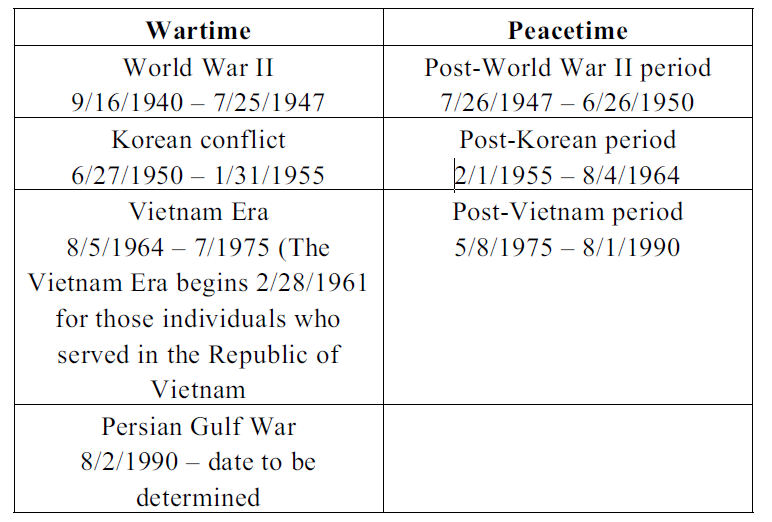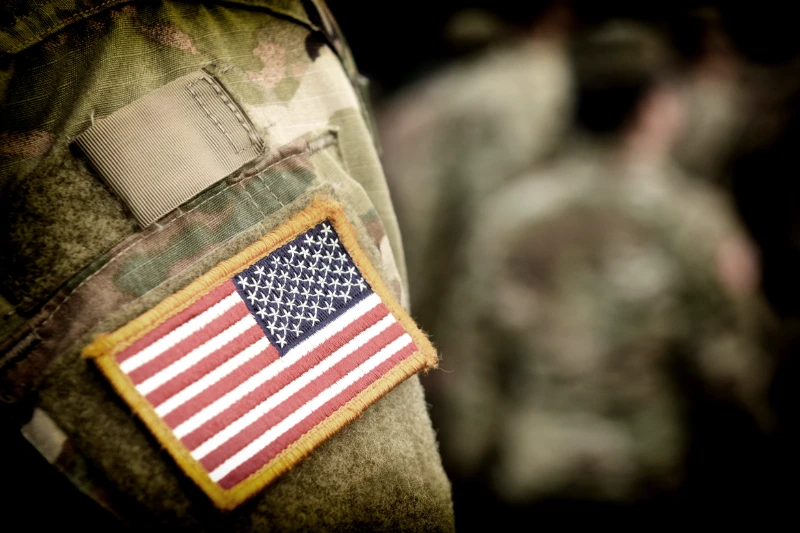VA Loan Entitlement Options for Military Couples Are you and your spouse both serving—or have…
Best Practices for Getting a VA Loan After Bankruptcy
Can you get a VA loan after bankruptcy? Yes, it is possible. VA loans have flexible criteria that can help veterans re-establish their financial footing. This guide covers eligibility after Chapter 7 and Chapter 13 bankruptcies, the required waiting periods, and steps to rebuild your credit for improved loan approval chances.
Key Takeaways
- VA loans are accessible to veterans post-bankruptcy, with eligibility dependent on the type of bankruptcy and improved financial behavior.
- Rebuilding credit after bankruptcy is crucial for VA loan approval, emphasizing consistent on-time payments and managing debt-to-income ratios.
- Preparation for a VA loan application post-bankruptcy involves gathering financial documents, writing an explanation letter, and ensuring stable employment.
Understanding VA Loan Eligibility Post-Bankruptcy
VA loan eligibility post-bankruptcy can significantly aid veterans in rebuilding their lives. These loans are often more accessible than conventional ones due to flexible requirements and unique benefits for military members.
Eligibility largely depends on the type of bankruptcy filing and subsequent financial behavior. For instance, Chapter 7 bankruptcy, known as liquidation bankruptcy, and Chapter 13 bankruptcy, a reorganization bankruptcy, have different criteria and waiting periods.
Veterans should also pay attention to lender-specific conditions, as some lenders may impose stricter rules than the VA.
VA Loan Eligibility After Chapter 7 Bankruptcy
After a Chapter 7 bankruptcy, veterans can still qualify for a VA loan. The key is demonstrating improved financial behavior post-discharge. Typically, this involves showing a positive credit history and proving that the bankruptcy was due to uncontrollable circumstances.
Minimum credit score requirements can vary by lender, so improving your credit history is important to enhance your chances of loan approval.
VA Loan Eligibility After Chapter 13 Bankruptcy
To qualify for a VA loan after Chapter 13 bankruptcy, veterans need to meet the following requirements:
- Show at least 12 months of on-time payments towards the repayment plan.
- Provide complete documentation.
- Obtain approval from the bankruptcy judge or trustee.
- Meet the lender’s credit score requirements.
By fulfilling these criteria, veterans can improve their chances of securing a VA loan post-bankruptcy.
Remember, any new debts incurred after filing for Chapter 13 must be approved by the court or trustee.
VA Loan Waiting Periods Post-Bankruptcy
The waiting period after bankruptcy can be a significant hurdle. Typically, a two-year waiting period is required after Chapter 7 bankruptcy, though it can be shortened to 12 months with a strong credit history.
For Chapter 13 bankruptcy, the waiting period is generally 12 months of on-time payments. Awareness of these timelines helps veterans plan their path to homeownership more effectively.
Two-Year Waiting Period for Chapter 7 Bankruptcy
The standard waiting period for Chapter 7 bankruptcy is two years from the discharge date. However, demonstrating a strong credit history for at least 12 months post-discharge can qualify you sooner, making you more attractive to VA lenders.
Twelve-Month Waiting Period for Chapter 13 Bankruptcy
After Chapter 13 bankruptcy, the waiting period is typically 12 months of on-time payments, demonstrating your ability to manage finances responsibly under a repayment plan.
After these 12 months, you can apply for a VA loan, provided you meet the other eligibility criteria. A shorter waiting period can greatly affect your chances of obtaining a VA loan. This can lead to a quicker approval process.
Rebuilding Credit After Bankruptcy
Rebuilding credit after bankruptcy is essential for improving your chances of securing a VA loan. Bankruptcy can severely damage your credit score, making it challenging to gain approval for new credit lines. However, it also offers an opportunity to reset your financial habits.
Consistently paying bills on time, managing outstanding debts, and correcting any errors on your credit report can gradually improve your credit score and enhance your VA loan eligibility.
Importance of On-Time Payments
Consistent on-time payments are essential for rebuilding your credit score post-bankruptcy. This demonstrates financial responsibility and helps manage outstanding debts. Over time, timely payments can significantly improve your credit score, making you a more attractive candidate for VA loans.
This consistency is key to showing lenders that you have learned from past financial mistakes.
Managing Debt-to-Income Ratio
Managing your debt-to-income (DTI) ratio is crucial for VA loan approval. This ratio reflects the portion of your income that goes towards debt payments and might improve post-bankruptcy as some debts are discharged.
To lower your DTI, consider increasing your income and paying off bills. Avoiding unnecessary expenses and not spending beyond your means are important steps in maintaining a healthy financial state.
Keeping Credit Utilization Low
A low credit utilization ratio is vital for rebuilding your credit. It shows effective debt management and reduces reliance on credit.
This practice can significantly improve your credit score, making you a more favorable candidate for VA loans.
Preparing for a VA Loan Application
Preparing for a VA loan application post-bankruptcy involves gathering necessary financial documents, writing a compelling explanation letter, and ensuring stable employment.
These steps demonstrate financial stability and responsibility to lenders, increasing your chances of approval. Being well-prepared can make the difference between approval and denial.
Gathering Financial Documents
Gathering required financial documents, such as proof of income, tax returns, and bankruptcy discharge papers, is an essential step in the VA loan application process. Proper documentation ensures a smooth application process and demonstrates your financial stability post-bankruptcy.
Having these documents ready can expedite the approval process.
Writing an Explanation Letter
An explanation letter is crucial for your VA loan application, especially post-bankruptcy. It should clearly explain the circumstances leading to the bankruptcy and the steps taken to regain financial stability.
A well-crafted letter can address concerns about your credit history and demonstrate your commitment to better financial habits.
Ensuring Stable Employment
Stable employment is vital for VA loan approval as it demonstrates a reliable source of income. Lenders typically want you to have a job tenure of at least two years for mortgage qualification.
If relocating during the loan application process, ensure your employer can confirm remote work arrangements. Stable employment increases your financial reliability in the eyes of lenders.
How Foreclosure Affects VA Loan Eligibility
Foreclosure can impact your VA loan eligibility, but it doesn’t disqualify you. Typically, there’s a two-year waiting period before you can qualify for another VA loan, during which an explanation letter detailing the circumstances of the foreclosure is required.
You’ll also need to secure a Borrower’s Certificate of Eligibility. Regular communication with your lender is important to understand the process and requirements.
Foreclosure and Partial Entitlement
If you experience a foreclosure on a VA-financed home, you won’t be able to use your full entitlement again, which may require a down payment for subsequent VA loans. Understanding your entitlement status and planning accordingly is important for securing future VA loans.
Despite these challenges, VA loans remain a valuable resource for veterans seeking homeownership post-foreclosure.
Benefits of VA Loans for Veterans Post-Bankruptcy
VA loans offer significant benefits to veterans recovering from bankruptcy, including no down payment requirements and lower interest rates, making va home loan approval ownership more accessible and affordable.
These benefits can help veterans make informed decisions and take advantage of VA loan programs to rebuild their lives and achieve homeownership.
No Down Payment Requirement
One of the most significant benefits of VA loans is the elimination of down payment requirements, making homeownership accessible for veterans without substantial savings. As long as the sale price does not exceed the appraised value, veterans can secure a home with a VA loan without needing a down payment.
This is especially beneficial for those recovering from financial hardships.
Lower Interest Rates and No Prepayment Penalties
VA loans typically offer lower interest rates, around 0.25% lower than conventional loan rates, making them more affordable. They also do not have prepayment penalties, allowing borrowers to get a va loan early without incurring extra costs. Additionally, a va mortgage can provide significant benefits for eligible veterans.
These benefits provide veterans with significant financial flexibility and long-term savings, making VA loans an attractive option post-bankruptcy.
Common Challenges and Solutions
Veterans often face challenges in obtaining VA loans post-bankruptcy due to bad credit and financial instability. Overcoming these challenges involves making on-time payments, reducing credit utilization, and managing remaining debts.
Addressing these issues is essential for successfully securing a VA loan and achieving homeownership.
Overcoming Bad Credit
To overcome bad credit, focus on improving your creditworthiness by paying bills on time and reducing credit utilization. Lenders for VA loans may accept credit scores as low as 500, though many prefer scores above 620.
Consistent on-time payments show that you have learned from past mistakes and are committed to better financial habits.
Handling Remaining Debts
Effectively managing remaining debts is essential for enhancing your chances of loan approval post-bankruptcy. Establish a solid remaining debt repayment plan to address outstanding debts, save for closing costs, and demonstrate financial preparedness.
This approach shows lenders that you are financially responsible and ready for the commitment of a VA loan.
Summary
Securing a VA loan post-bankruptcy is challenging but achievable with the right approach. Understanding eligibility criteria, waiting periods, and the importance of rebuilding credit are crucial steps. Preparing thoroughly, managing debts, and leveraging the benefits of VA loans can lead you to successful homeownership. Keep your eye on the prize and take consistent steps towards financial stability; the journey may be tough, but the reward is well worth it.
Frequently Asked Questions
Can I get a VA loan after bankruptcy?
Yes, veterans can obtain a VA loan after experiencing bankruptcy, whether it is Chapter 7 or Chapter 13. It’s advisable to check your eligibility and rebuild your credit to increase your chances of approval.
How long do I have to wait after Chapter 7 bankruptcy to apply for a VA loan?
You generally need to wait two years after your Chapter 7 bankruptcy discharge to apply for a VA loan, although a strong credit history may allow you to qualify as soon as 12 months later.
What documents do I need for a VA loan application post-bankruptcy?
For a VA loan application post-bankruptcy, you need to provide proof of income, tax returns, and bankruptcy discharge papers. Ensuring you have these documents ready will streamline the application process.
How does foreclosure affect my VA loan eligibility?
Foreclosure impacts your VA loan eligibility by imposing a two-year waiting period, during which you must provide a detailed explanation letter. Additionally, it may limit your full entitlement benefits.
What are the benefits of VA loans for veterans post-bankruptcy?
VA loans provide veterans with significant advantages post-bankruptcy, including no down payment and lower interest rates, which can facilitate homeownership. These benefits make it easier for veterans to rebuild their financial stability without the burden of prepayment penalties.









